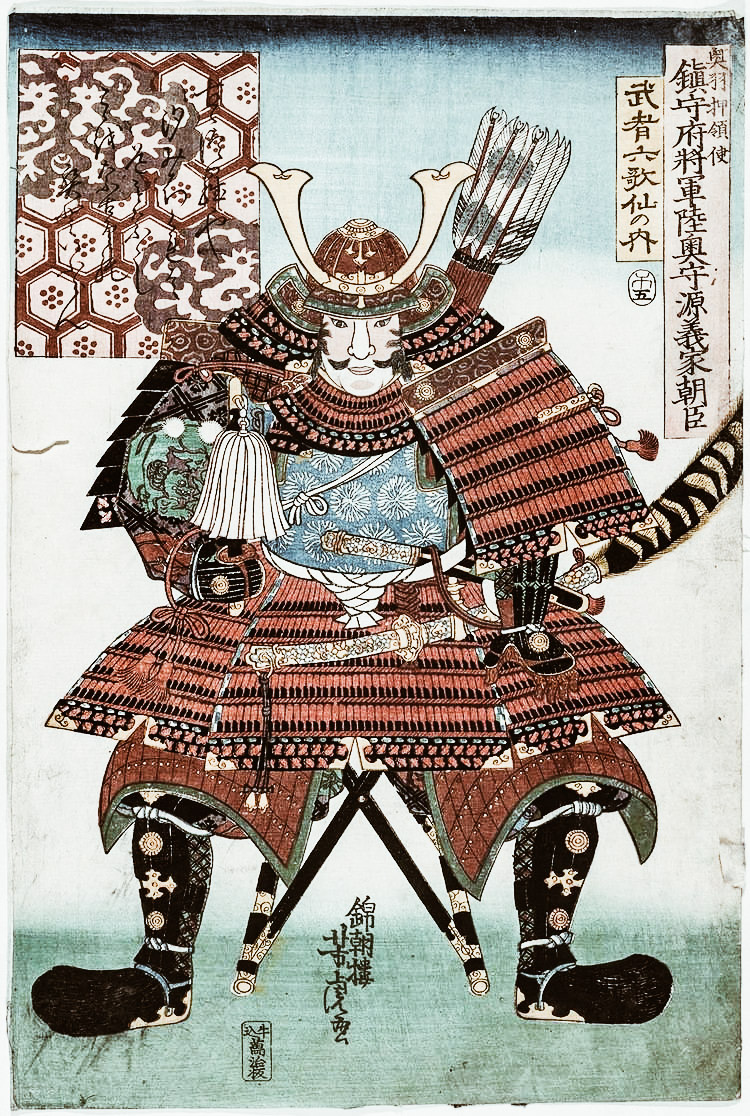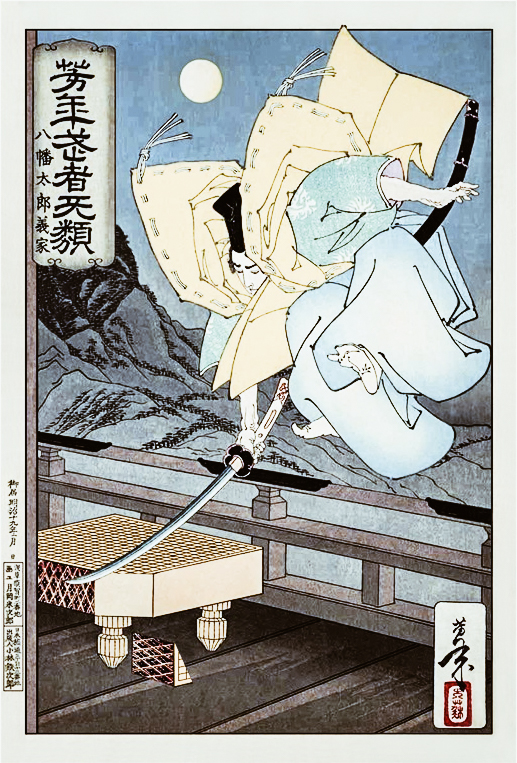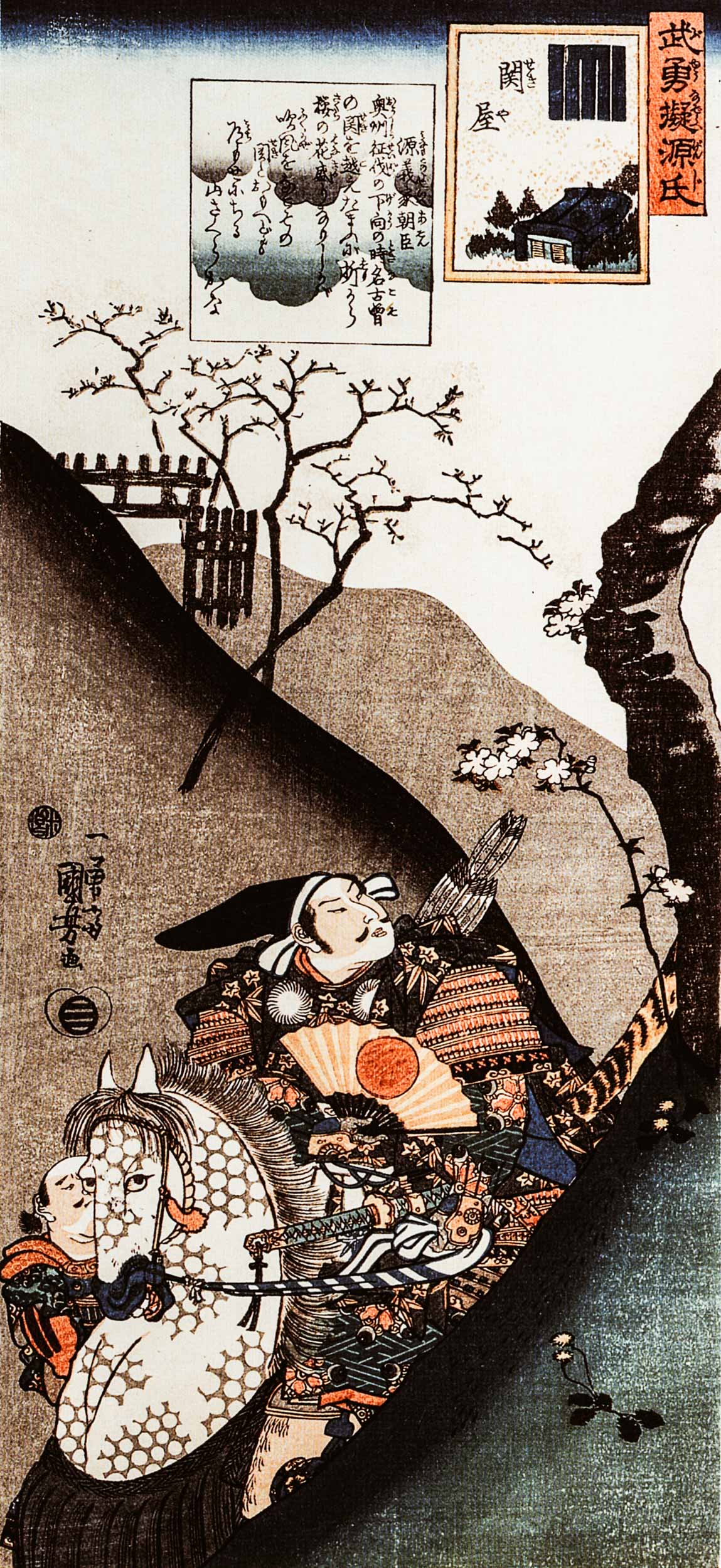Japan History: Minamoto No Yoshiie
Minamoto No Yoshiie, the spirit of the Samurai
written by: SaiKaiAngel | translation: Erika
Minamoto No Yoshiie (1039 – 4 August 1106), embodies the spirit of the samurai. He was the first son of Minamoto Yoriyoshi, a famous commander.

photo credit: alchetron.com
In 1051 Minamoto No Yoshiie was charged with defeating the Abe clan in the Zenkunen war (war of the first nine years) and the Kiyohara clan in the Gosannen war (war of the next three years). Abe had held important positions for years in this distant and prohibitive region and had come to assume a certain autonomy. Like Taira Masakado, Abe had had the task of subduing the northern barbarians and, from the court’s point of view, becoming barbarians themselves. They have indeed been described as ebisu, a generic term that has also been applied to Ainu.
After his death, Yoshiie was elevated to Kami status: renamed “Hachimantaro” which means “son of Hachiman”, the god of Shinto war.

photo credit: wikipedia.org
The Zenkunen war
By 1050 the power of Abe no Yoritoki was widespread throughout the region, and this gave him permission to collect taxes and confiscate lands. The official governor, private from each region, asked the imperial government for help. Minamoto no Yoriyoshi was then appointed new governor and together with his son he was sent against the Abe clan.
The struggle lasted from 1051 to 1063, twelve years including nine of war and three of truce. Yoshiie fought alongside his father in all the fighting, including the battle of Kawasaki and the siege of Kuriyagawa.
In 1057 Abe no Yoritoki’s son Abe no Sadato continued the war after his father’s death.
In Mutzu Waki, a tribute to the reputation of Yoshiie’s warrior, there is the story of an exchange that took place between Yoshiie and Sadato during his escape from the fortress on the Kurika River, during the attacks by the Minamoto army.
Hachimantarō, during a chase along the Koromo River shouted: “Sir, you are showing your back to the enemy! Aren’t you ashamed? Turn around for a moment, I have something to tell you.” When Sadato turned around, Yoshiie said, “Koromo castle has been destroyed.” Sadato, turning around, said: “Over the years the threads have become tangled, and this pains me.” At that point, Yoshiie put down the arrow he had loaded and returned to his field. In the midst of such a savage battle, that was a gentlemanly act.
Yoshiie returned to Kyoto in early 1063 with the Head of Abe no Sadato and the following year he took several followers of the Abe clan whom he had taken prisoners as servants.

photo credit: wikipedia.org
Gosannen war
Yoshiie was commander during another major Heian period conflict. In early 1083, appointed governor of the province of Mutsu, he intervened to calm the hearts within the Kiyohara clan, previously a Minamoto ally in the war against the Abe.
Despite this, the clash leadership struggle between Kiyohara no Masahira, Narihira and Iehira did not stop, and so Yoshiie pledged to restore peace to the region. The final clash took place in 1087 on the palisades of Kanazawa. Yoshiie, aided by his younger brother Minamoto no Yoshimitsu and Fujiwara Kiyohira, attacked the position held by Kiyohara no Iehira and his uncle Kiyohara no Takahira. The conflict became known as the subsequent three-year war and culminated in Numu (1086) when Takahira and Iehira were killed. In the Kokon Chomonjū it is said that during the siege of Kanezawa, Yoshiie avoided an ambush by noticing a flock of birds taking flight from a forest. Despite suffering large losses in his ranks, Yoshiie is said to have been a particularly effective leader, managing to keep morale high and maintaining discipline among the warriors.
Minamoto No Yoshiie was called “The Samurai with the greatest courage under heaven”. Mel 1098 was granted to Yoshiie to visit the Imperial Court, a rare honor which by its very rarity indicates the growing gap between the Court and the provincial houses. This alienation would eventually contribute to the samurai eclipse of imperial authority in the late 12th century.
However, it is difficult to place Minamoto Yoshiie in a historical context. His greatest political contribution was probably to strengthen the Minamoto family, especially those branches that reside in Kanto. His other contribution was less tangible. The legend of Minamoto No Yoshiie, who emerged from his northern wars and reports as a cultured war man, established a model for the future samurai that would influence subsequent generations of warriors.
Share this:
- Click to share on Facebook (Opens in new window)
- Click to share on Twitter (Opens in new window)
- Click to share on Tumblr (Opens in new window)
- Click to share on Pinterest (Opens in new window)
- Click to share on Telegram (Opens in new window)
- Click to share on WhatsApp (Opens in new window)
- Click to share on Reddit (Opens in new window)
- Click to print (Opens in new window)






